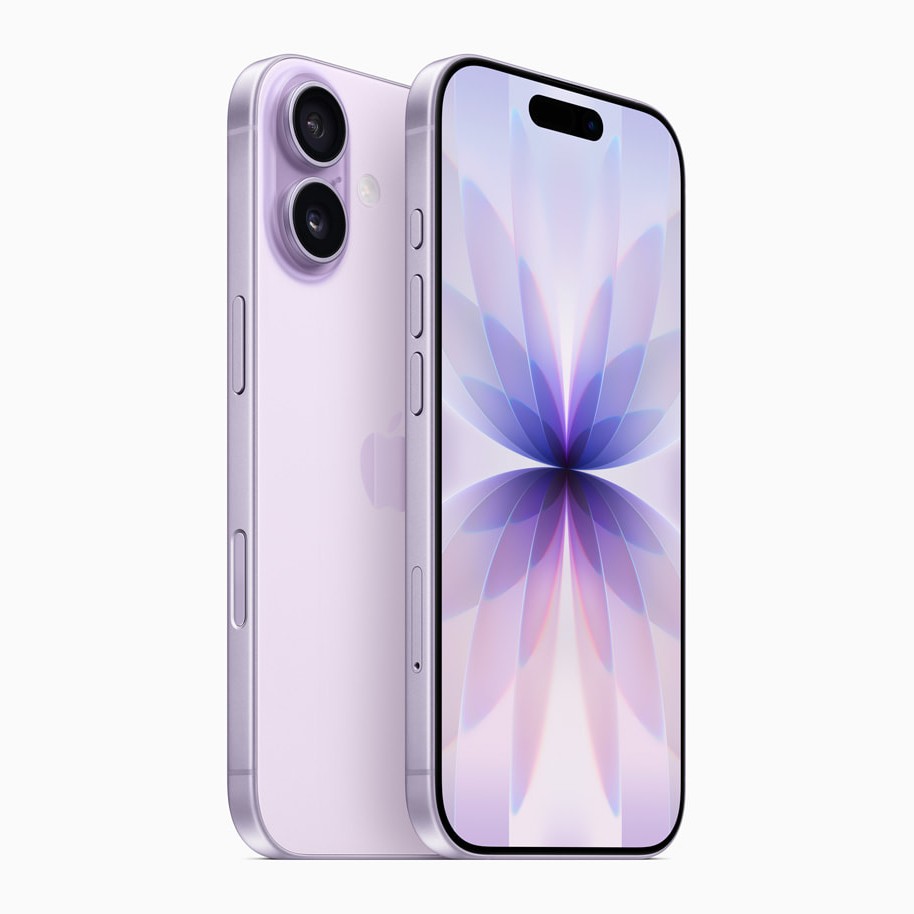

The iPhone 17 is a smartphone developed by Apple, and part of the nineteenth generation of the iPhone. Succeeding the iPhone 16, the device was announced alongside the higher-priced iPhone 17 Pro and 17 Pro Max and iPhone Air during an Apple Event at Apple Park in Cupertino, California, on September 9, 2025, and was made available for purchase on September 19 for $799.
The iPhone 17 comes in 5 colors: Lavender, Sage, Mist Blue, White, and Black.
The iPhone 17 also uses the same design as the previous model (the iPhone 16) while improving internal hardware and shrinking the display bezels compared to the previous model.
Chipset
The iPhone 17 uses the Apple A19 SoC. It incorporates the new Apple-designed N1 networking chip, part of a trend by Apple to reduce reliance on Broadcom and third-party chip suppliers. The N1 supports Wi-Fi 7, Bluetooth 6.0, and Thread. The iPhone 17 does not use Apple's new C1X modem found in the iPhone Air, opting instead for Qualcomm's Snapdragon X80. Apple said it intends to continue adoption of its own chips going forward, but that wasn't the focus for this year.
The iPhone 17 also removes the 128GB storage option that was available from its predecessor, the iPhone 16, marking the first base model iPhone to only come with 256GB and 512GB of storage with prices starting from $799.
Display
The iPhone 17 includes a larger 6.3" OLED display and dynamic 120Hz ProMotion refresh rate, marking its debut on a non-Pro iPhone model.
The display uses a resolution of 2622x1206 at 460 pixels per inch. The iPhone 17 also supports Always-On display.
Camera
The iPhone 17 uses a 48MP Dual Fusion camera system, with a 48 Megapixel Fusion Main lens, and a 48 Megapixel Fusion ultra-wide. This enables 12MP 2x zoom shots with optical quality using the main camera lens.
The front camera uses a 18MP Centre Stage camera with Dual Capture, which allows the front camera to be used in any orientation and create either a landscape, or portrait photo, based on who's in the shot.
Security
Starting with all iPhone 17 models and iPhone Air, devices based on the A19 and A19 Pro include Memory Integrity Enforcement (MIE). MIE is an always-on, hardware-and-OS, memory-safety defense that uses Apple's secure memory allocators, Enhanced Memory Tagging Extension (EMTE) in synchronous mode, and Tag Confidentiality Enforcement policies. By default, MIE hardens key attack surfaces including the kernel and over 70 userland processes while preserving performance. Apple states that MIE targets mercenary spyware by making end-to-end exploit chains significantly more expensive and difficult to develop and maintain.